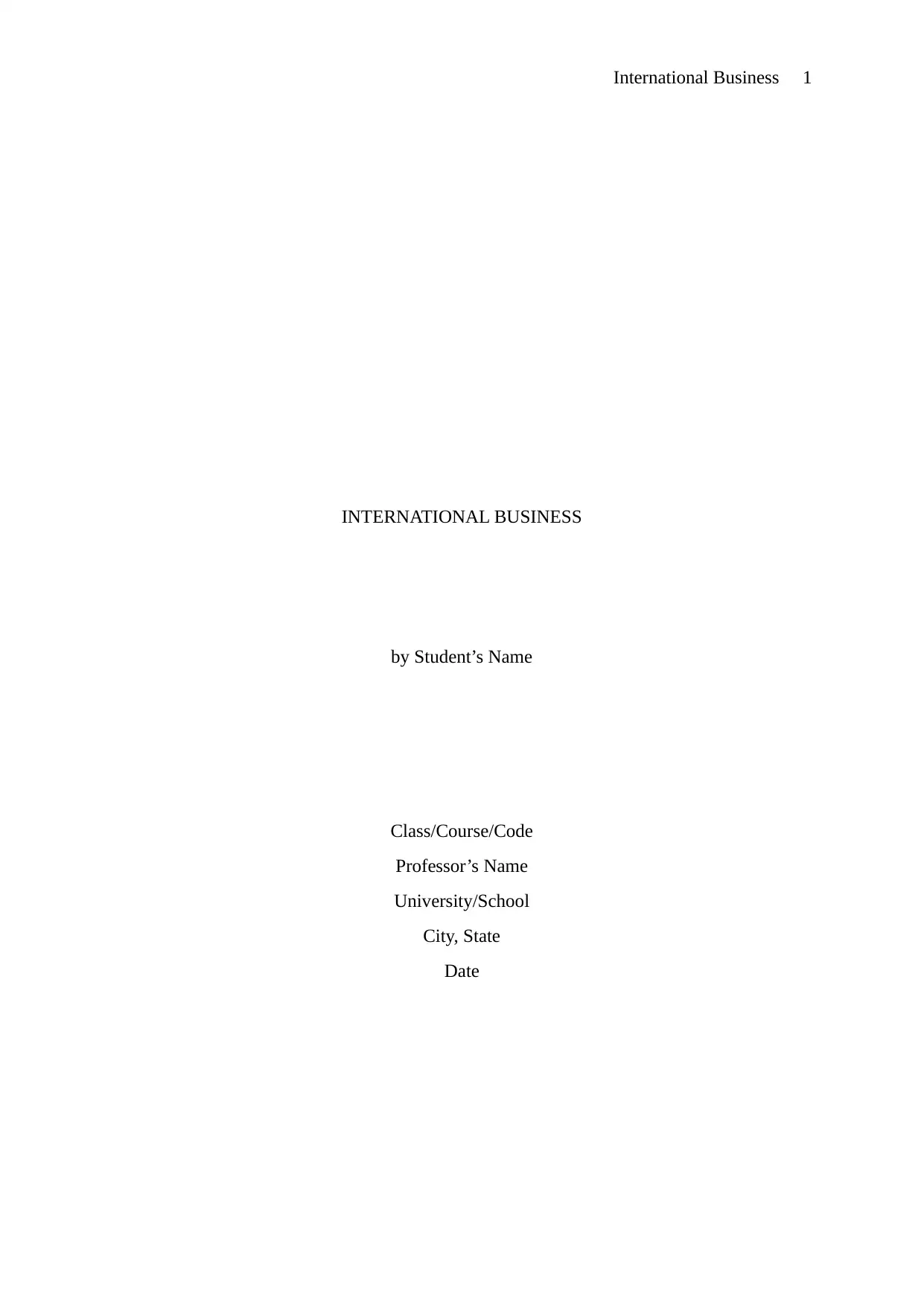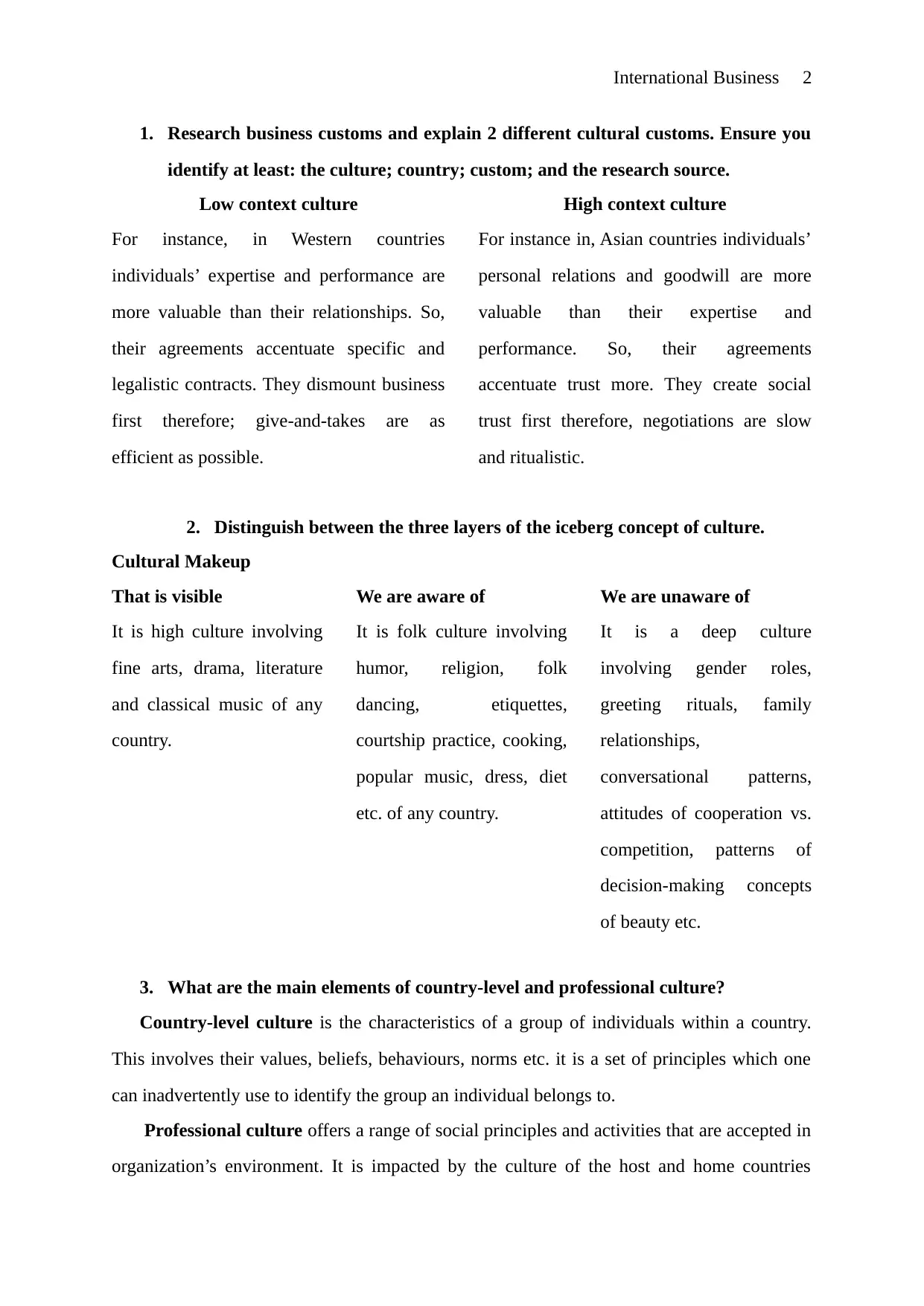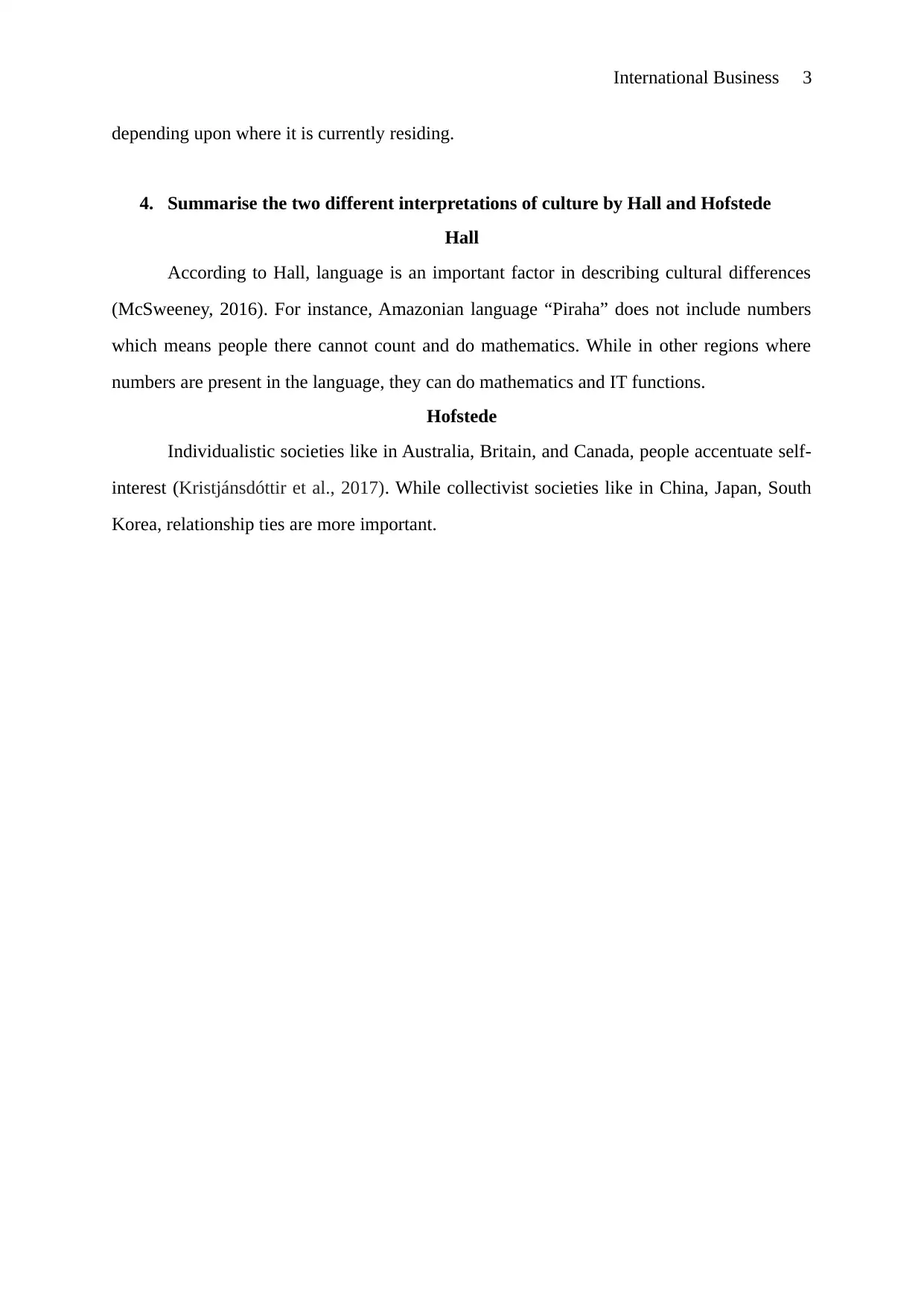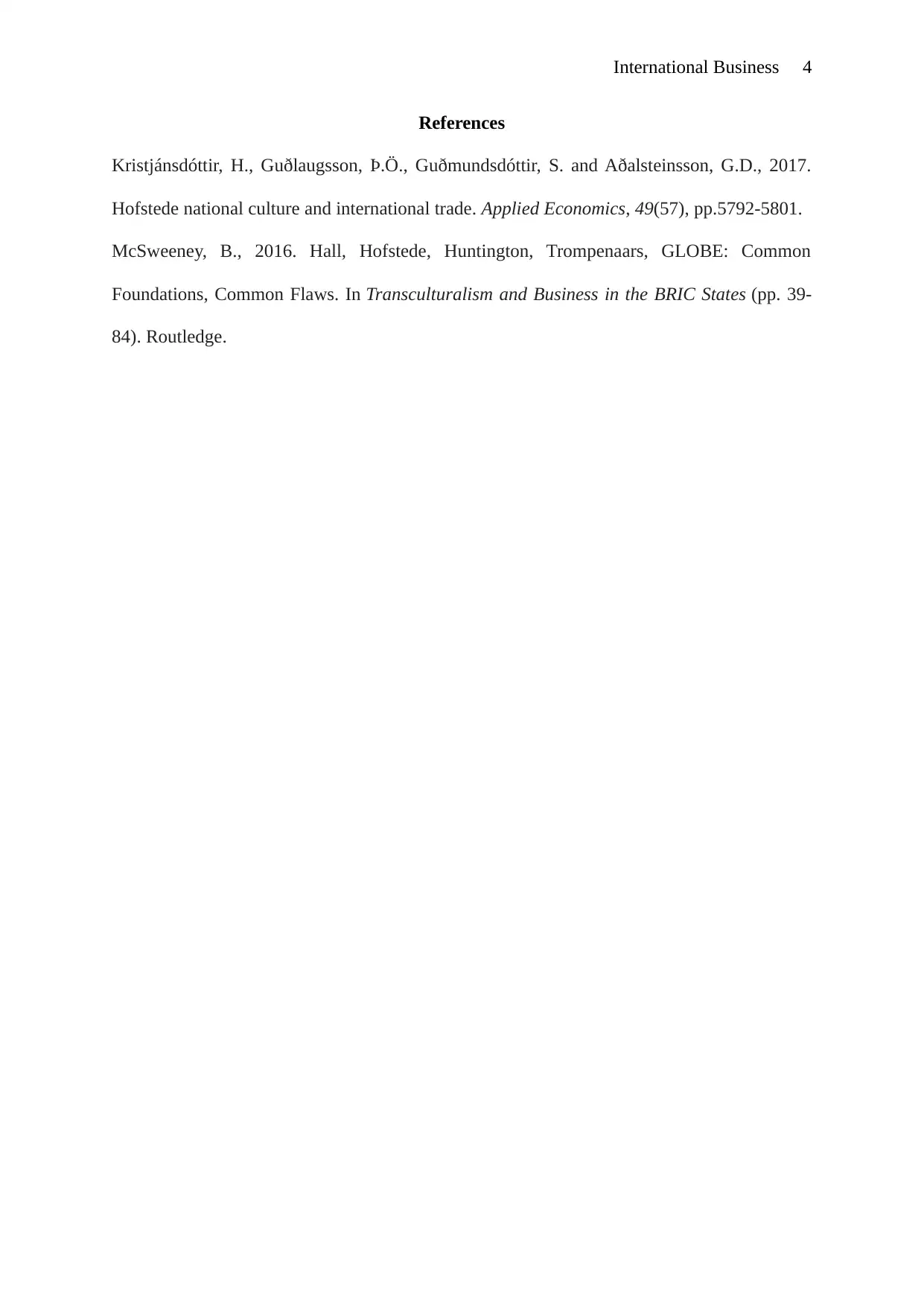International Business Report: Culture, Customs, and Comparisons
VerifiedAdded on 2022/08/28
|4
|528
|32
Report
AI Summary
This report on international business delves into the analysis of cultural customs, comparing low and high context cultures, and exploring the iceberg concept of culture. It examines the importance of language in cultural differences and how it impacts business practices. The report also discusses the influence of professional culture and the country-level culture. Furthermore, the report summarizes the cultural theories of Hall and Hofstede, highlighting their contributions to understanding cultural dimensions in international business. The report provides insights into how cultural nuances impact business operations and relationships across different countries, providing a valuable resource for students studying international business.
1 out of 4







![[object Object]](/_next/static/media/star-bottom.7253800d.svg)